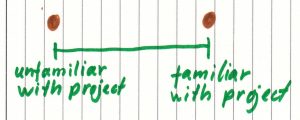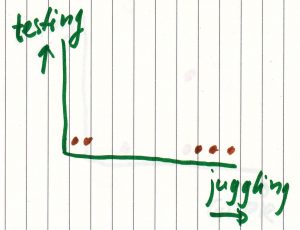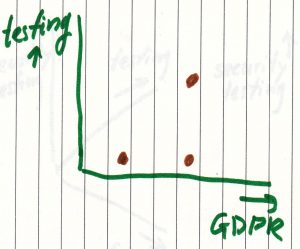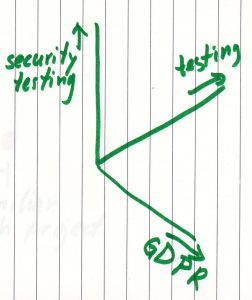During the break I asked Mykola Gurov:
“Do you speak at Agile Testing Days?”
“Yes.”
“Me too.”
“What are you talking about?”
“Exploratory Testing and GDPR.”
“That is hot.”
That thing called feedback
If I want to talk on a conference, then I have to submit a summary of my talk with other relevant information like email address and name.
An important thing for making a good proposal is feedback. For my first pitch of my workshop I got a clear mail. No clarification or feedback would be given on my failed attempt.
I was not really interested in a discussion, but only in some points to improve.
Mail me more.
(On the notes of “Tell me more” of Summer Nights)
One conference gave me a ray of hope for a related talk:
GDPR is important.
Bless you.
Another conference gave me specific feedback:
what are you exactly going to do during the workshop?
That is rather useful.
Feedback on diverse proposals
This year the Global Diversity Call for Papers Day held a workshop in Amsterdam. And there were many other places all over the world. This organisation really wanted to increase the number of diverse speakers.
During the workshop I gave my smartphone to one of the workshop leaders. She read my proposal and I started to talk.
Her response was: “I thought it was only about accessibility law.”
My initial plan was to talk about accessibility law and privacy law.
My workshop missed focus, so I dropped the accessibility law.
Another exercise was writing a profile. If a speaker has no interesting profile, delegates might skip his or her session. Or worse the proposal is not accepted at all.
The structure of the exercise was:
- Tell about myself to 2 other people.
- Write a profile including myself.
- Listen to all profiles.
- Collect the profiles for later use.
Feedback on structure
Within a month I spoke two men who had experience with teaching. I told about Stephen Covey who wrote several books about leadership.
He was able to convey his ideas to a lot of people at the same time. Above all he kept them involved.
Then I described the structure of my workshop and they loved it.
Feedback by rehearsals
Pitching is fine, catching is great.
When I needed people to practice my workshop, I said:
“It is about GDPR and testing.”






